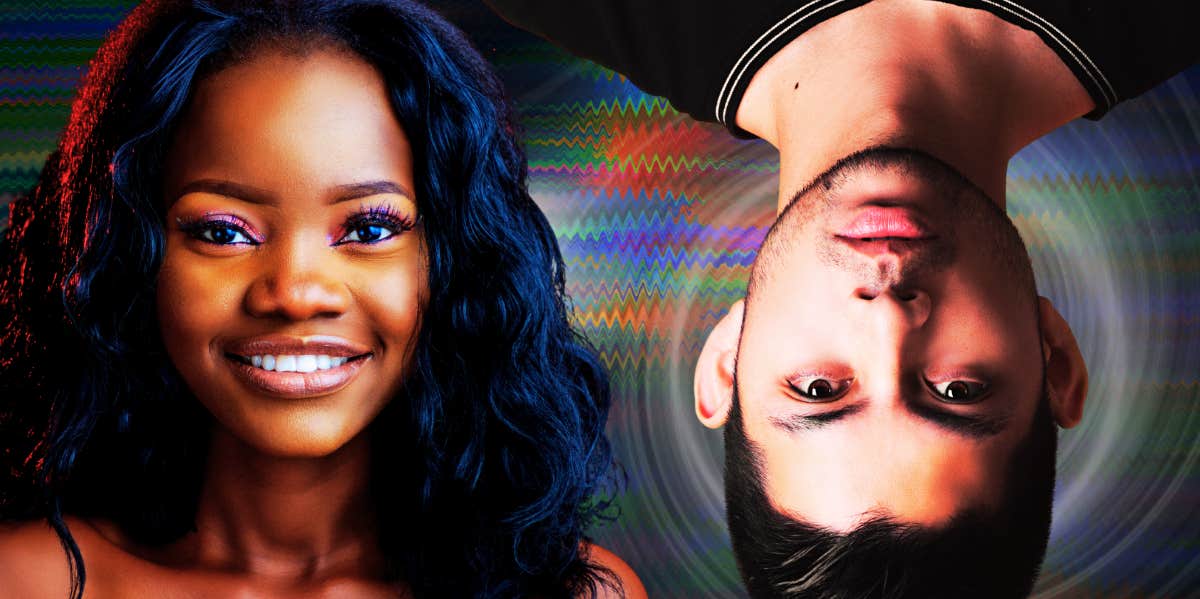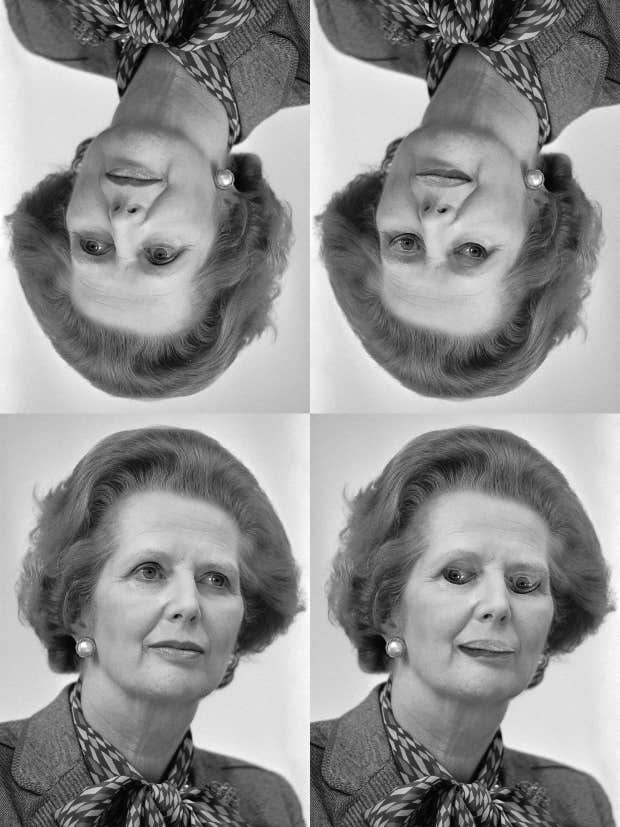The Optical Illusion That Makes Upside Down Faces Look Unrecognizable
This visual phenomenon tells us a lot about how our brains work.
 Pexels, BackgroundStore via Canva
Pexels, BackgroundStore via Canva There are many ways that our eyes can play tricks on us. The flashed face distortion effect can turn a good-looking person into an alien, while staring at pictures containing lines and shapes can alter how the world around you looks, and even make you hallucinate!
Another thing that can create an optical illusion is our ability to process the faces of other people. Such is the case with a phenomenon known as the Thatcher effect.
As you take the test below, do you notice anything weird about the faces shown?
Dr. Steven Rathje shared a quick demonstration of the Thatcher illusion in this TikTok video:
To experience the effect, two identical pictures are inverted. The first one is simply flipped upside down while the second one is not only upended, but has the mouth and the eyes vertically flipped as well.
The changes can be detected immediately in the upright photo, but are not obvious in the inverted one.
What is the Thatcher effect?
It turns out that when viewing an inverted face (upside down), we are unable to identify changes to the eyes and mouth that we easily notice when that same face is upright. This is called the Thatcher effect, also known as the Thatcher illusion.
The illusion shows that people have a difficult time identifying isolated feature changes when a face is turned upside down.
The Thatcher effect was named after former British Prime Minister Margaret Thatcher because it was first demonstrated on a photo of her. The image and concept were created in 1980 by professor of psychology, Peter Thomas, at the University of York.
 Photo: via Wikimedia Commons
Photo: via Wikimedia Commons
How does the Thatcher illusion work?
The Thatcher effect occurs because of the cognitive functions we use to perceive faces, which is specifically programmed to view them upright. Even when faces are very similar, we can see small things that differentiate them from one another.
So, rather than viewing the face as a whole, we notice structural differences from one to another and key in on details such as the nose, eyes, and mouth. Knowing this helps to understand the science of facial recognition.
When experiments have been conducted using the Thatcher effect, the time used to notice the inconsistency of features is measured to determine response time on upright versus inverted photos. This gives researchers an idea of how humans process peoples’ faces.
Children, especially those who have been diagnosed with autism, are particularly susceptible to the Thatcher effect. People who have prosopagnosia (face blindness) don’t respond as strongly to the illusion. The part of the brain responsible for recognizing the configuration of faces, the fusiform face area of the cortex, is affected by their condition.
One study showed that the Thatcher effect is not exclusive to humans, but that primates experience the same when features are inverted on a picture.
Researchers found that neurons in the middle lateral face patch (ML) were consistent with the Thatcher illusion, while those in the anterior lateral face patch (AL) were not.
This means that the attributes in the middle of our face are the primary features used to separate one person’s face from another. The same effect has been found in biological motion, making it impossible to see when an entire figure is inverted.
NyRee Ausler is a writer from Seattle, Washington, and author of seven books. She covers lifestyle and entertainment and news, as well as navigating the workplace and social issues.

